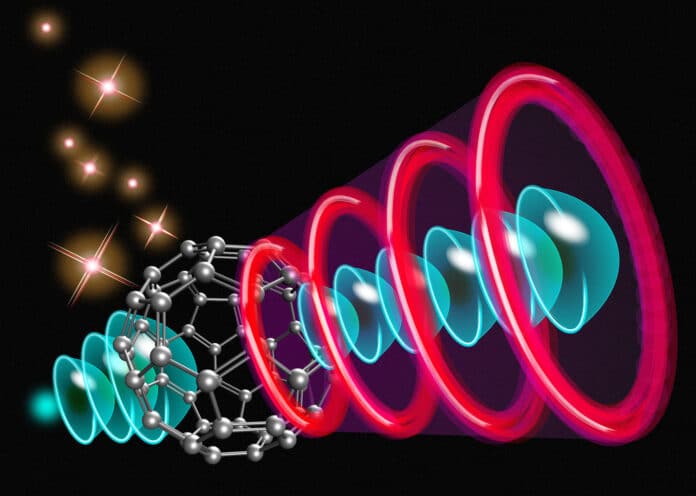In the presence of electric fields and specific wavelengths of light, molecules emit electrons, creating patterns that persuade curiosity but an eluded explanation. A new theoretical analysis has changed this: the effects of which could enhance our capacity to examine the physical world and provide new high-tech applications.
An international team of researchers, including those from the University of Tokyo‘s Institute for Solid State Physics, theorized how the emission of electrons from excited molecules of fullerene should behave when exposed to specific kinds of laser light.
Using a single molecule called fullerene, the team has demonstrated a switch analogous to a transistor. The researchers can switch the route of an incoming electron in fullerene in a predictable manner by employing a well-calibrated laser pulse. Depending on the laser pulses used, this switching process can be three to six orders of magnitude faster than switches in microchips.
Networks of fullerene switches could create computers that are more powerful than those made with electronic transistors and enable microscopic imaging devices to achieve previously unheard-of levels of clarity.
Project Researcher Hirofumi Yanagisawa said, “What we’ve managed to do here is control how a molecule directs the path of an incoming electron using a very short pulse of red laser light. Depending on the light pulse, the electron can either remain on its default course or be redirected predictably. So, it’s a little like the switching points on a train track or an electronic transistor, only much faster. We think we can achieve a switching speed 1 million times faster than a classical transistor.”
“This could translate to real-world performance in computing. But equally important is that if we can tune the laser to coax the fullerene molecule to switch in multiple ways simultaneously, it could be like having multiple microscopic transistors in a single molecule. That could increase the complexity of a system without increasing its physical size.”
The fullerene molecule that underlies the switch is similar to the more well-known carbon nanotube, but fullerene is a sphere of carbon atoms rather than a tube. The fullerenes align themselves in a specific way so that they will predictably route electrons when placed on a metal point, which is effectively the end of a pin.
To cause the emission of electrons from the fullerene molecules, quick laser pulses on the order of femtoseconds, quadrillionths of a second, or even attoseconds, quintillionths of a second, are focused on them. This is the first time that the emission of electrons from a molecule has been controlled in this manner using laser light.
Yanagisawa said, “This technique is similar to how a photoelectron emission microscope produces images. However, those can achieve resolutions at best around 10 nanometers, or ten-billionths of a meter. Our fullerene switch enhances this and allows for resolutions of around 300 picometers or three-hundred-trillionths of a meter.”
Journal Reference:
- Hirofumi Yanagisawa, Markus Bohn, Hirotaka Kitoh-Nishioka, Florian Goschin, and Matthias F. Kling, “Light-induced subnanometric modulation of a single-molecule electron source,” Physical Review Letters: March 8, 2023, DOI: 10.1103/PhysRevLett.130.106204
